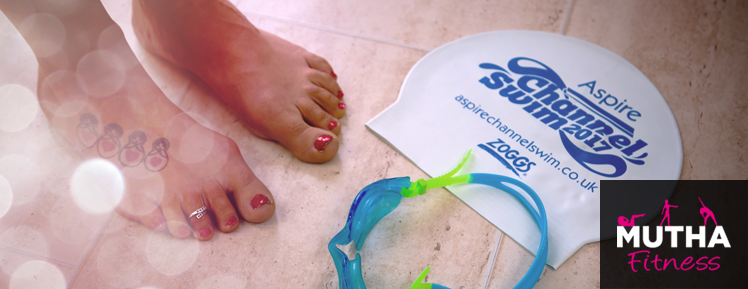We Came. We Swam. We Conquered!

The hubby and I have completed our part in the relay team of influencers for the Aspire Channel Swim challenge and do you know what? I’m feeling pretty proud of myself!
I hadn’t swam as a sport for a number of years, probably more like a decade, having loved it as a child. I saw it as a bit of a pain. You have to wash your hair afterwards, you feel freezing cold when you come out of the pool, it’s hard to put your clothes back on because you’re still wet and too impatient to wait to be dry enough. It’s a hassle. But despite all of that, I’ve absolutely loved it. I’ve found my love of swimming again. It’s such a great form of exercise and I’m actually good at it. So even though my part in the relay challenge is complete, I will continue to go for at least one swim a week and more often if I can. Taking part in the challenge has improved my own fitness level and swimming ability. When I started I struggled through 30 lengths and really felt like I’d done them. By the third week I was able to complete 50 lengths and felt great afterwards. Don’t get me wrong, I could still feel I’d had a full on work out but my breathing was under control and I didn’t feel exhausted like I had previously.
In the main I used two different swimming strokes to complete my part in the challenge with Front crawl (or freestyle) being my favourite.
Front Crawl / Freestyle
This stroke uses alternating arms while the legs do a small but effective flutter kick. The common pattern with front crawl is face in the water 1,2, 3 and breath. Head comes up to the side to take a recovery breath before continuing on with the stroke. It’s the fastest swimming stroke and is why it’s common to see this style in swimming competitions and triathlons. Here’s a video to demonstrate the technique
Breaststroke
Although this is not my preferred swimming stroke, this is actually the most popular style of swimming for most people, Both arms do a simultaneous half circle movement under the water in front of the swimmer. Head above water and legs both doing a simultaneous whip kick or more easily described as ‘frog’ legs. The benefits of this stroke is that it’s easy to keep your head out of the water, meaning breathing is controlled and does not become an issue for the swimmer. More experienced swimmers will often submerge their heads as ultimately the stroke will become faster. However, breaststroke is a much slower swimming technique than front crawl. Here’s a video to demonstrate the technique
I did dabble a little bit with back crawl which is basically the same as front crawl but as the name suggests, on your back. This is actually often recommended by doctors for those with back problems as it can be a great, yet gentle back work out. This brings me nicely onto why we took part in the challenge in the first place. Aspire are such a worthy charity, raising money to support those with spinal cord injuries and help people lead independent lives. There is no government funding and they relay solely on donations and fundraising events exactly like the swimming challenge. Please join me in continuing to support Aspire as they help those in need.
Thanks to those who have followed my journey. I now proudly pass on the baton to the next swimmers in my relay team.
Good luck guys x

